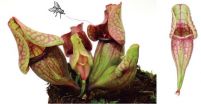(Press-News.org) NEW YORK, March 4, 2015 - Air pollution has been linked to a dangerous narrowing of neck arteries that occurs prior to strokes, according to researchers at NYU Langone Medical Center.
The scientists analyzed medical test records for more than 300,000 people living in New York, New Jersey or Connecticut. They found that people living in zip codes with the highest average levels of fine-particulate-matter pollution were significantly more likely to show signs of narrowing (stenosis) in their internal carotid arteries, compared to those living in zip codes with the lowest pollution levels.
The study will be presented at the American College of Cardiology's 64th Annual Scientific Session as a poster presentation and published online in the Journal of the American College of Cardiology (JACC).
Fine particulate matter pollutants, also called "PM 2.5 pollutants," are particulates with diameters less than 2.5 millionths of a meter. They are mostly by-products of combustion engines and burning wood.
"We spend a lot of time thinking about traditional risk factors for stroke such as high blood pressure, cholesterol, diabetes and smoking--but our data underscore the possibility that everyday air pollution may also pose a significant stroke risk," said senior investigator Jeffrey S. Berger, MD, an assistant professor in NYU Langone Medical Center in the Department of Medicine, Leon H. Charney Division of Cardiology.
Medical researchers have noticed since the 1950s that episodes of high air pollution can bring temporary jumps in local heart attack and stroke cases. More recent studies have linked heart attack and stroke risks to long-term pollution exposures as well, including PM 2.5 exposures.
"Most of the studies in this area have focused on the heart and the coronary arteries; no one has really looked at other parts of the vascular system, in particular the carotid arteries," says Jonathan D. Newman, MD, MPH a cardiologist at NYU Langone Medical Center in the Department of Medicine, Leon H. Charney Division of Cardiology and the study's lead author.
The two internal carotid arteries are situated on either side of the neck and provide most of the brain's blood supply. Strokes often result when accumulated plaque breaks off from a narrowed section of an internal carotid artery and blocks smaller vessels in the brain.
In the study, the carotid narrowing data came from vascular ultrasound tests performed on 307,444 tri-state area residents during 2003-2008 by Life Line Screening, a leading community-based health screening company focused on evaluating risk factors for vascular disease. People with known carotid artery disease at the time of their ultrasound test were excluded from the dataset. The pollution data for the period came from the Environmental Protection Agency.
The researchers' analysis showed that subjects in the top fourth of tri-state zip codes, ranked by average PM 2.5 levels, were about 24 percent more likely than those in the bottom quarter to have shown signs of stenosis--defined as a narrowing by at least half--in either internal carotid artery.
"Our study was a population study, so it can't establish cause and effect, but it certainly suggests the hypothesis that lowering pollution levels would reduce the incidence of carotid artery stenosis and stroke," says Dr. Newman.
Scientists aren't yet sure how air pollution contributes to vascular disease. Studies have indicated that it may do so in part by causing adverse chemical changes to cholesterol in the blood, by promoting inflammation, and by making blood platelets more likely to form clots.
The study was a collaboration between researchers and clinicians in Leon H. Charney Division of Cardiology and the Departments of Environmental Medicine and Population Health at NYU Langone Medical Center. Dr. Newman notes "This study represents an important partnership between leading experts across specialty areas in Environmental Medicine and Cardiology and has led to innovative and new thinking with great potential for future research collaborations."
The team is planning further studies. "Does the relationship between pollution levels and carotid artery stenosis hold up on a national level? Are certain groups disproportionately affected by air pollution? Is pollution also linked to other types of vascular disease, such as in your leg?" Dr. Berger says. "There are a lot of questions we have yet to answer."
INFORMATION:
Other contributors to the study included George D. Thurston, ScD, Kevin Cromar, PhD, Yu Guo, MA, Caron B. Rockman, MD and Edward A. Fisher, MD, PhD, all of NYU Langone Medical Center. Support for the research was provided in part by the National Institutes of Health (R01 ES019584), the National Heart and Lung Blood Institute (RO1HL114978), the American Heart Association (13CRP14410042) and the New York State Department of Health.
Dr. Newman will present the poster "Particulate Air Pollution and Carotid Artery Stenosis," on Monday, March 16 in at 9:45 a.m. PT/12:45 p.m. ET/4:45 p.m. UTC in Prevention Moderated Poster Theater, Hall B1.
March 16, 2015, New York, NY - Exploring the fundamental mechanism by which a cell-surface receptor transmits its signal, an international team of Ludwig researchers and their colleagues has established proof of concept for an entirely new approach to drug design. They report that a class of synthetic molecules known as diabodies can, from outside the cell, latch onto a target receptor and manipulate it in such a manner as to induce distinct and varying effects within cells and tissues. Led by Christopher Garcia of Ludwig Stanford, the researchers show in lab experiments ...
Carnivorous plants have strange-shaped leaves, and they can grow on nutrient-poor environments by trapping and eating small animals. Charles Darwin, often called "the father of evolution", was also interested in carnivorous plants, and he wrote a book titled "Insectivorous Plants" published in 1875. Since then a lot of researches have been done, but how such strange-shaped leaves were altered during evolution remained unknown.
A research team in Japan has revealed how carnivorous pitcher leaves are formed in Sarracenia purpurea, a carnivorous plant native to North America. ...
Establishing protected areas in forests is one way to keep deforestation at bay and safeguard biodiversity. However, a study led by researchers from the National University of Singapore (NUS) has revealed that such a measure is ineffective in the case of biodiversity-focused protected areas in Indonesia.
The research, led by Assistant Professor Roman Carrasco of the Department of Biological Sciences at the NUS Faculty of Science and Assistant Professor Alex Cook of NUS' Saw Swee Hock School of Public Health, found that the monitoring and prevention of road construction ...
According to a meta-analysis published in BMC Family Practice, high dose zinc acetate lozenges may help shorten diverse symptoms associated with the common cold.
The common cold is an infection caused by over a hundred viruses, and it is a major cause of days off school or work and visits to a doctor.
A previous meta-analysis of three randomized trials found that high dose zinc acetate lozenges shorten the duration of colds by 42%. Since all of the three studies reported the duration of diverse respiratory symptoms and of systemic symptoms such as muscle ache and headache, ...
To increase the biomass of fish, contemporary ecological theory predicts that either the amount of food or the quality of the food has to increase. In a recent experiment, researchers at Umeå University doubled the fish biomass under identical food supply and food quality by only controlling how much of total food supply that was channelled to juvenile and adult fish, respectively. The results have major implications for the exploitation (harvest) of fish populations and the coexistence of predatory fish and their prey.
To increase the biomass of a population, contemporary ...
A means of reprogramming a flawed immune response into an efficient anti-tumoral one was brought to light by the results of a translational trial relating to breast cancer. Thanks to the innovative combination of mathematical modelisation and experimentation, only 20 tests were necessary, whereas traditional experimentation would have required 596 tests to obtain the same results.
The study was jointly conducted by Doctor Marie-Agnès Doucey (Experimental oncology, Centre Ludwig de l'UNIL pour la recherche sur le cancer), Professor Ioannis Xenarios (UNIL, SIB, Vital-IT) ...
The Menetries's tiger moth (Borearctia menetriesii) is the most rare and enigmatic representative among the Palearctic Arctiinae. During an expedition in almost inaccessible wild taiga area of Eastern Siberia, Russian scientists had the luck to encounter it. During their studies they also recorded feeding larva of this mysterious species on a native devil's helmet host plant for the first time. The study was published in the open access journal Nota Lepidopterologica.
The Menetries's tiger moth (Borearctia menetriesii) is the most rare and enigmatic representative among ...
Amsterdam, March 16, 2015 - Elsevier journal Maturitas, today announced the publication of a position statement by the European Menopause and Andropause Society (EMAS) covering the ten- point guide to the integral management of menopausal health. This has been written to mark the 10th EMAS Congress in Madrid May 20-22, 2015.
With increased longevity and more women becoming centenarians, management of the menopause and post-reproductive health is of growing importance as it has the potential to help promote health over several decades. Women have individual needs and the ...
The studies below will be presented at the American College of Cardiology's 64th Annual Scientific Session the morning of Saturday, March 14.
1. Depression May Influence Cardiovascular Outcomes
A new study adds to the evidence that depression may influence cardiovascular outcomes, prompting authors to call on cardiologists to pay closer attention to depression when managing patients with heart disease.
Researchers at Care Institute of Medical Sciences in India found depression to be independently associated with a greater chance of cardiovascular death and lower quality ...
Patients with symptoms of heart disease have similar outcomes in terms of death and major cardiac conditions regardless of whether they undergo a functional stress test or a computed tomographic scan, but the scan may be better at ruling out the need for subsequent tests and procedures in patients who are free of heart disease, according to research presented at the American College of Cardiology's 64th Annual Scientific Session in San Diego.
The PROMISE trial is the first-ever randomized controlled trial to compare clinical outcomes in patients receiving functional stress ...

